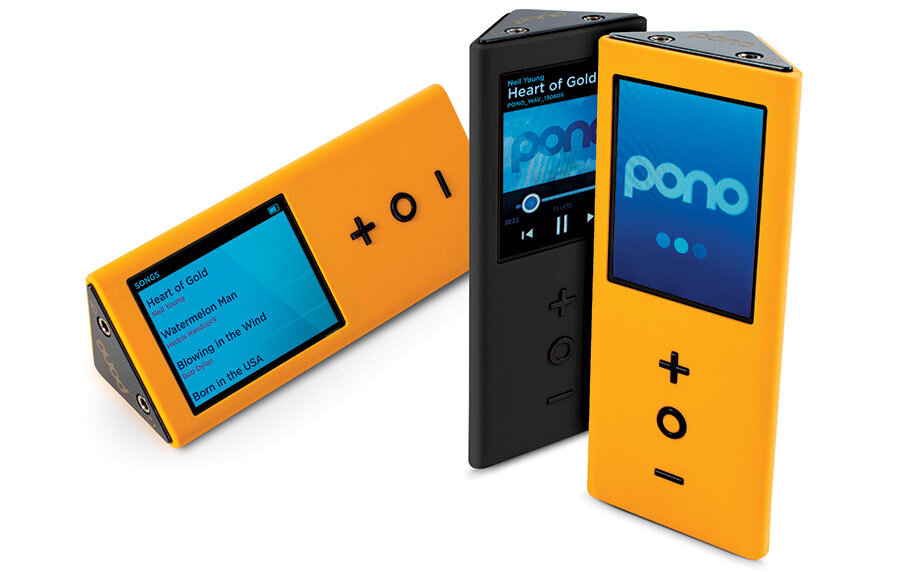Pono leads a listening revolution
Loading...
There’s never been a rock star more predictably unpredictable than Neil Young. Whatever your opinion of his music, the man has always followed his unique inner compass – often at his own expense – veering from feel-good folkie to angry political firebrand to raucous guitar strangler, sometimes over the course of consecutive albums. He’s truly an artist who dances to a different drummer.
Mr. Young’s burning passion these days is Pono, a Toblerone-shaped digital music player that attempts to turn back the clock to the glory days of high-fidelity sound reproduction.
Beginning with the arrival of CDs in the early 1980s up through today’s MP3s, audio recordings have been getting squashed and compressed so radically that sound engineers estimate we’re only getting about 5 percent of the sound recorded in the studio by the time we listen to a song through our earbuds.
It’s a number that makes Young, a veteran of recording studios since the 1960s, livid. So he decided to put together a crack team of sound experts and designers and create a portable device capable of reproducing the full range of sound artists produce in the recording studio – to “rescue music,” as he says in his promotional video for Pono.
Three years and many prototypes later, Pono is ready for prime time, debuting via an 11-minute video starring seemingly every rock star imaginable, unanimously singing its praises.
For now, music lovers might have to make rock star money to afford it. Retailing at $399, the player costs three or four times as much as an iPod, and holds only about 800 songs, compared with the iPod’s capacity for potentially 10,000 or more. Special high-resolution albums will cost $15 to $25. There will be no convenient streaming – you’ll have to hook it up to your computer with a USB connection to download the music from ponomusic.com. But it’s worth it, “because it’s all about the sound,” says Young in the video.
“It’s like we’ve been listening to xeroxes of the Mona Lisa,” he told a crowd of music fans at the South By Southwest musical festival in Austin, Texas, in early March, inviting them to join his revolution to bring back the music “the artists, producers, and engineers intended you to hear.”
It must have struck a chord. The Pono Kickstarter site raised $4 million in pledges (it was asking for $800,000) in its first week alone.
Many critics doubt the player will succeed, citing the low-cost advantage and convenience of MP3 streaming for most music fans. It’s a challenge that Young is willing to take on, favoring quality over volume. “Whether it’s a success or not, music still wins,” he said.







